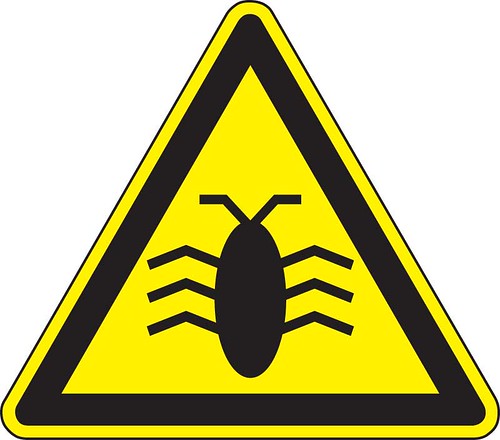Exhibition time
Then the exhibition opens and the visitors swarm in.
Get set...All your exhibition preparations are soon going to get tested.
Typical 'Demo-er' life-cycle in an exhibition
On the first day, mostly you can see visitors stroll through your booth - with few moments of pause in front of your booth, with intriguing glances at the booth backdrop and then pick up a brochure, have a cursory glance at it and then leave in a hurry. Typically this group first wants to get a feel of the exhibition landscape and about who is located at which location. Later they analyse which of the exhibitors deserve a visit in their second lap.
Then there is one set of visitors who are more proactive and come have a chat with you. Ask about what the product / service offers - but do not seem to be heeding great attention to the answer that you give. At the end of your well crafted technical explanation, they state their company profile, exchange business cards and ask you to contact them directly by mail after the exhibition is over.
As the day progresses, you come across some valued visitors who are genuinely interested in knowing about your solution. They introduce themselves, state their company profile, clearly putting forth what they are looking for in our solutions and are eager to have a live demo of our product. During the demo, they are very engaging and receptive. They are proactive in getting their concepts reaffirmed and doubts cleared. Finally also state what they like about the product and / or what they feel is missing in our product. They also would be interested in knowing what can be expected in the future versions. Finally, they leave after having inquired about the price and exchanging the business cards. Overall a real good - 'value demo'.
But here's a catch associated - every value demo takes up good portion of the 'demoers' energy.
Over the next few days, you also get tired and even a little bored of going through the same script again and again. The enthusiasm you had while giving a first value demo wanes and slowly you start going through motions. As the show goes on, you spend more time sitting in the demo chairs, checking mails and doing your personal business. You also start engaging your co-exhibitors with the tittle-tattles. You settle for the fact that if some one 'really' wants the demo - they would approach you and wake you up from the slumber and engage you. Other customers - they may not be worth it. Subsequently, you begin to anticipate about the end of the day / show and dread about how wonderful and comforting the office environment was.
My story and my lessons:
All through my 6 year-old professional career, as an exhibitor I have participated in 6 international exhibitions (in Germany, England and USA). This has been my early story of exhibition experience until I decided to give it a thought about how to become a good exhibitor.
I am going to state below, few lessons that I learnt through my journey - which later I crafted and implemented to good effect.
And I can assure you, putting these into action will make you a very effective exhibitor.
These points are more directed towards exhibiting a software product in an exhibition, but nevertheless- the gist of these points are relevant for all exhibitions. GO ahead and have a read!
Set your goal
First up, you need to ask yourself the question - Why am I attending this exhibition?Though the straightforward answer is to sell the product - try to think in a holistic perspective. Or rephrase the question as 'Apart from selling the product what can I get out of this event?'
Being a technical person, my goal was to interact with the exhibitors, understand their workflow environment, evaluate their needs and helping them with a solution. I sought to understand and genuinely care for the visitor and build a rapport with them rather than merely sell the product.
Attitude
A good exhibitor will possess the attitude of a good host - warm, welcoming and pleasant.Practice the following to exhibit these attitudes:
- Smile often.
- Be graceful.
- Be organized and ready.
- When somebody stops and looks at the stall - walk up to them (slowly) and inquire politely if you may help them.
- When the visitor talks about himself / his company / his background - do not interrupt. Acknowledge and whenever possible compliment as much as you can.
Set the tone for interaction
Invariably the first question faced by an exhibitor would be 'What do you guys do?' Have a catchy 15 - second answer for this. This generally sets the tone for further interaction.So rather than being stereotypical - technically correct answer, you might try answering with a little more creativity, punch and positivism. As the old folks say - 'the first impression is the best impression.'
Demo iteration
While giving a demo - we need to know two things about the person to whom the demo is given:- What is his competence level in the area?
- How much time he is willing to spend?
Sometimes, we can directly ask the person whether they need an in-depth demo coverage or just the outline. If you do not feel comfortable asking the above question, have 3 levels of demo. After each level based on his receptivity and his attention decide whether to proceed to next level.
- In the first level - show the most automated / sophisticated procedure which involves least clicks and hence we convey the idea that the software saves lot of effort and time.
- In the second level - show the other semi - automated workflows. This conveys the idea that the software design is also flexible and can adjust and adapt to existing manual workflow.
- In the third level - show the database arrangement and about other configuration / settings involved. This level is mostly reserved for a technical / hands-on designer operator to show the depth.
Having a fixed demo script helps you find your feet initially (maybe during the start every day), but there is also a strong chance that you might get saturated / bored with the demos as you proceed. So as you gain your confidence in demos - play, have fun, personalize, improvise and innovate. Can you give the audience something refreshing at the same time relate to them on a more personal basis in a shorter time - that's the high point.
Interaction during demo
Presentation should be loud, slow and clear - Why?Loud (Loud enough) - Somewhere people relate it to the confidence of the person in the product that he sells. It gives them a reassurance that the solution is right for them.
Slow and Clear - The person who is looking at your software is looking at it for the first time. His jargon might be different. So, the only way he can understand this is:
If he sees what's going on screen
Relates it with what you are saying and
Correlates (digests) with what's happening in his workplace.
As you see, this is an analytical process - not merely an 'Audio-Visual' process.
So give time.
Ask more questions - This helps in two ways.
- It straightaway brings emotional involvement from the person and makes the environment more receptive.
- You can re-route your demo based on the feedback and become more relevant.
Listen, acknowledge and compliment - Do not interrupt when the other person talks. This way, you would learn more about the working culture and environment (including jargons) and thereby talk 'his language'.
Mind your Body Language
Maintain a positive, energetic body language throughout. Your body language will reinstate to the customer that this is a comfort-zone environment. Use your arms and shoulders to explain, communicate. Laugh aloud when you hear a humorous remark from your visitor.Subtle 'Mirroring' is a tried and tested way that makes the visitor feel more relaxed and encourages them to open up. It is the behavior in which one person copies another person usually while in social interaction with them. It may include miming gestures, movements, body language, muscle tensions, expressions, tones, eye movements, breathing, tempo, accent, attitude, choice of words or metaphors, and other aspects of communication.
Finish it off well
- Round off the demo by summarizing how your product would fit into his existing workflow and what benefits it can offer.
- Agree on the action steps - the next interaction, the date and the medium.
- Acknowledge the visitor feedback, thank him for his valued time and wish him well.
Be grateful
Exhibitions offer you a wonderful platform to interact with the industry, peers and competitors. Be grateful for the medium and enjoy the presence and the people around.Every good demo given will make you more confident and enhances your CCQ (customer connectivity quotient). Every bad demo is a lesson - you are only getting better, enriched by it - if you are able to analyze and acknowledge.
The key is to be conscious and keep trying.






.png)


